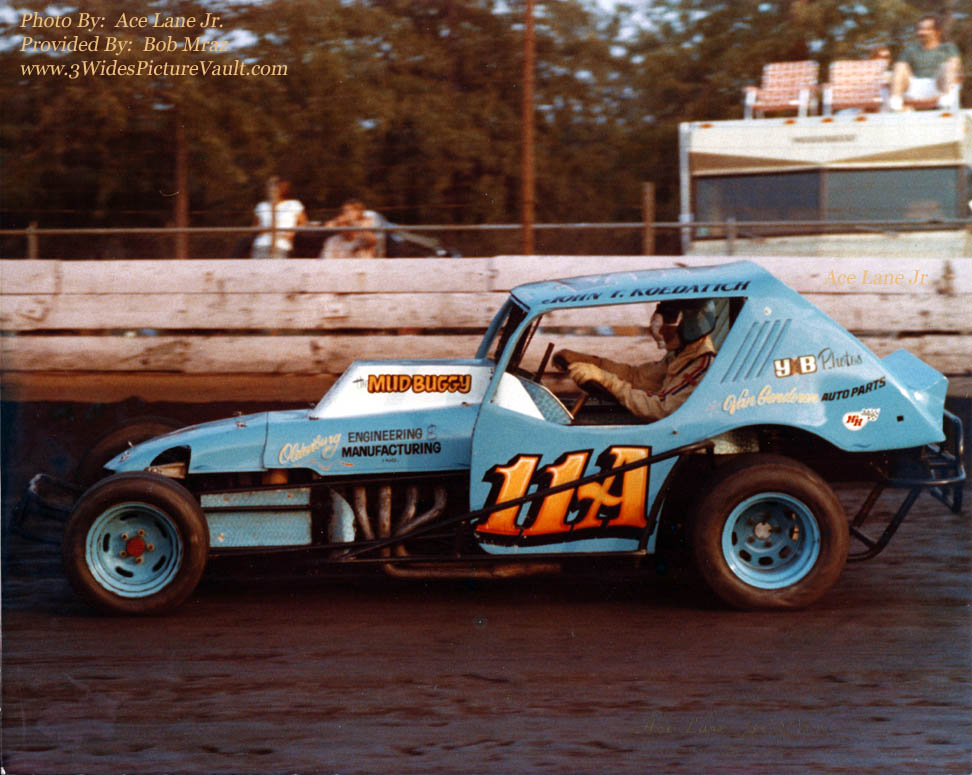| 01.17.13 |
Terry Fick |
Lowering unsprung weight is
the correct answer for the wheel cutouts. In chassis design you have both
sprung and unsprung weight. The weight of the car is supported by the
springs (or torsion bars), the action of the springs is controlled by the
shocks. All weight bearing on the spring plus half the weight of the spring
and half the weight of the shock are sprung weight. The axle, wheels,
brakes, tires, and half the weight of the spring and shock are all unsprung
weight. Look at the suspension of race and even street cars. Notice the
body of the shock is always attached to the chassis. Why? Attaching the
body of the shock (the majority of the weight) to the chassis makes that
weight sprung weight. If you had the body attached to the axle it would be
unsprung weight. So actually slightly more than half the weight of a shock
is sprung weight.
Between the spring and the shock one can control how the weight of the car
affects control. I was a winged sprint driver so I have a better (but by
far not perfect) idea of how it works on a sprint than a mod, but the basic
theory is the same. When you pitch the car in centrifugal force will throw
the weight to the outside, simple physics. Anyone who has swung their child
in a circle can feel that action. The car, just like the child, tries to
increase the radius of the swing in an attempt to find the balance point
where speed and centrifugal force allow a smooth arc. Depending on track
conditions you set spring rate and shock valving to bite into the dirt (side
bite) stopping the slide (decreasing the radius). At the same time you want
the car to throw the weight to the inside tire to generate forward bite to
get off the turn. All this happens in just a few seconds but if the car is
balanced you do not need to lift off the throttle (or maybe just burp it) to
go through a turn.
By now you are saying, okay Fick, you're running your mouth but what are you
saying? We have controlled the sprung weight and have made it behave to our
advantage, but the unsprung weight we have no control over. As I recall
from my days in the stands at The Square, the track stayed fairly tacky but
had a tendency to get a little rough. On such a track you would soften the
spring rates as much as possible to allow the car to follow the ruts
adjusting your shock valving to compromise between the soft jounce you would
like to run against handling in the turns. In other words you want to
control the car with the weight. However, the unsprung weight is not
controlled, it hangs below the spring out of the control of the spring and
shock package. So when that unsprung balloon (tire) hits a rut it will act
just like a ball rolling across a rough field. In a turn the unsprung
weight wants to leave the park instead of turn sharply.
Granted, the unsprung weight pushes against the sprung weight but it is
doing so in an uncontrolled manner with unpredictable results. Physics
dictates that the greater the mass the more force it takes to move it and
also the greater the momentum once in motion. Less unsprung weight means
less weight we have no control over, fewer variables making our car do what
it wants as opposed to what we want it to do.
I hope this helps. If you think about it at some point I promise the light
will turn on. A caveat, those who read this and have set up cars can pick
holes through the entire thing because there are many more issues to
consider which is what makes car set up far more important than horsepower.
I have no idea how many books I read on the subject of handling,
engineering, and driving, how many chassis guys I talked to, and the volumes
of advice given to me by Gambler. So just be advised the story is much
longer than this piece (and it is too long) but you get the idea. |
